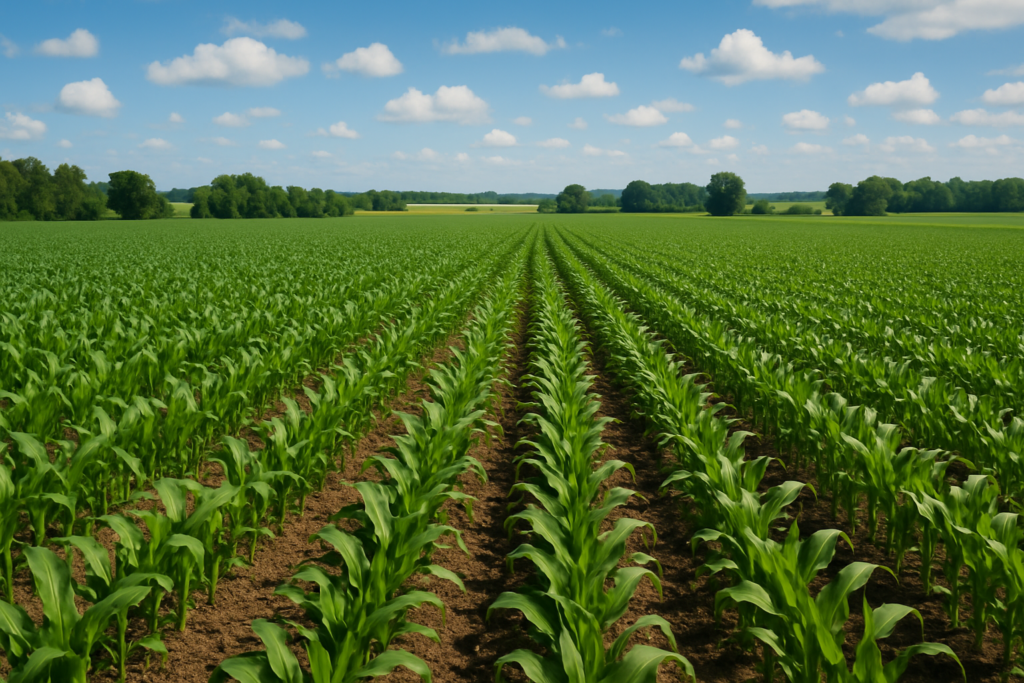Agriculture is the heartbeat of civilization, anchoring humanity to the rhythms of nature. Preparing land for a successful crop is both a science and an art—a foundational step that determines the vitality of the harvest. Today, as farming meets technology, the traditional processes of soil nurturing are amplified by data-driven tools and artificial intelligence, promising a future of abundance.
Part I: Preparing the Land
Before a single seed is sown, the land must be shaped to welcome it. Proper land preparation improves soil structure, eliminates weeds, enhances water infiltration, and fosters microbial life. It includes:
- Clearing: Removing weeds, rocks, debris, and leftover plant material.
- Tilling: Loosening the soil to improve aeration and enable root penetration. Methods vary from deep ploughing to minimum tillage, depending on the soil type and crop.
- Leveling: Ensures uniform water distribution, preventing waterlogging and erosion.
- Seedbed Formation: Creating ridges, furrows, or beds depending on crop and irrigation type.
Each step not only facilitates crop growth but also prepares the land to withstand environmental stresses.
Part II: Soil Testing and Enrichment
Healthy soil is essential for a healthy crop. But without testing, farmers are operating blindly. Soil testing reveals:
- pH levels (ideal range for most crops: 6.0–7.0)
- Nutrient content (N, P, K, and micronutrients)
- Organic matter percentage
- Texture and compaction
Once the test results are in, tailored enrichment follows:
- Organic Additions: Compost, green manure, and crop residues enhance microbial life and improve structure.
- Nutrient Amendments: Fertilizers or biofertilizers are added based on deficiencies.
- Soil Conditioners: Lime adjusts acidity; gypsum improves compacted or sodic soils.
Properly enriched soil acts as a reservoir, holding water and nutrients for sustained crop growth.
Part III: Precision Farming Tools
Precision agriculture brings a new level of accuracy to land preparation:
- GPS-guided Tractors: Allow accurate ploughing and planting, reducing overlap and saving resources.
- Soil and Crop Sensors: Measure pH, moisture, and nutrient levels in real-time.
- Drones and Satellite Imagery: Provide bird’s-eye views for mapping variability in crop health and soil condition.
- Variable Rate Technology (VRT): Enables targeted application of fertilizers, seeds, and pesticides.
- Farm Management Software: Centralizes data from different tools, helping farmers make informed decisions.
These tools ensure that every inch of farmland receives the care it specifically needs, optimizing yields and sustainability.
Part IV: Uses and Implementation of AI in Agriculture
Artificial Intelligence (AI) is transforming agriculture at every level:
- Decision Support Systems:
- AI analyzes weather, soil, and crop data to advise on optimal planting times and crop selection.
- Disease and Pest Detection:
- Computer vision systems detect early signs of disease or pest infestation from images captured by drones or smartphones.
- Automated Machinery:
- AI-powered robots and tractors perform tasks such as weeding, seeding, and harvesting autonomously.
- Predictive Analytics:
- Machine learning models predict yield outcomes, market demand, and even irrigation needs based on real-time data.
- Smart Irrigation Systems:
- AI uses weather forecasts and sensor inputs to control water delivery, minimizing waste.
By integrating AI, farmers can shift from reactive to proactive strategies, increasing productivity and resource efficiency.
Conclusion
Preparing land for the perfect crop is a timeless necessity, but how we do it is rapidly evolving. From manual tilling to sensor-driven smart farming, the journey is one of progress rooted in age-old wisdom. Soil testing, enrichment, precision tools, and AI aren’t just innovations—they are necessities for a food-secure future.
By embracing these practices, we honor the legacy of farming while cultivating a smarter, greener, and more abundant tomorrow.








Leave a Reply